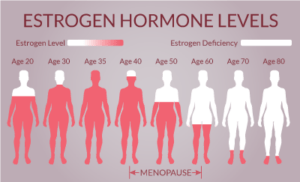Menopause – one of the biggest changes the female body tackles in response to changing hormones and typically peaks at ages 49-51.
Menopause typically reflects the absence of menstruation of at least 12 months. Most women associate this period with the dreaded hot flushes, poor sleep and fluctuating moods. These symptoms occur due to the plummet of oestrogen and progesterone. As we may or may not know, these female sex hormones have a very positive role in regulating many bodily processes, so when they drop off the face of the earth, our body can struggle to maintain its normal processing.

(https://health.usf.edu/care/diabetes-endocrinology/services-specialties/hormone)
What can often go unknown is the positive effect these female sex hormones have on our musculoskeletal health. Oestrogen and progesterone tend to have a positive effect on:
- Muscle repair rate
- Collagen synthesis rate
- Bone formation rate
What do we see happen to musculoskeletal system during menopause?
- Reduced rate of muscle repair leading to weakening muscles
- Reduced collagen synthesis leading to stiff tendons increasing risk of tendinopathies
- Altered biomechanics due to weakening muscles and stiffening tendons leading to bursitis.
- Decreased bone formation rate leading to increased risk of developing osteoporosis

Menopause is a normal process and we can’t change that, however we can have an impact on how severe the changes manifest themselves within our musculoskeletal system. The right type of strength and resistance training, and weight-bearing exercises can reduce the risk of developing osteoporosis, and can prevent the onset of bursitis and tendinopathies. Education and awareness is a key factor in managing the onset of menopause and its symptoms.
If you have any questions following on from this blog, feel free to get in contact.
We are always here to help!
Claire van Poppel
Physiotherapist
